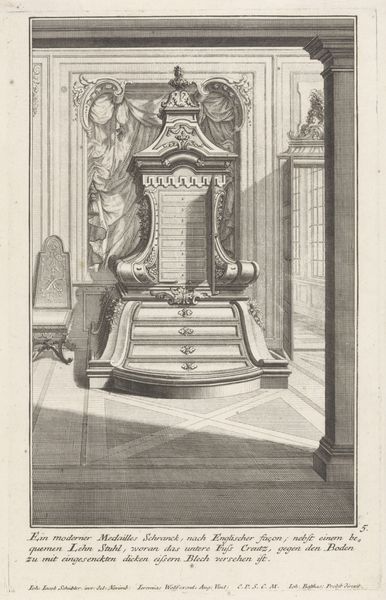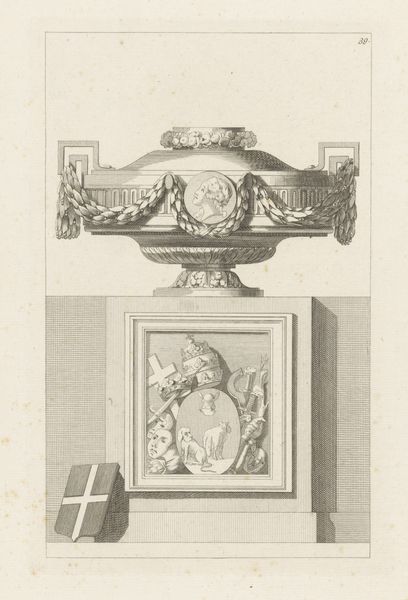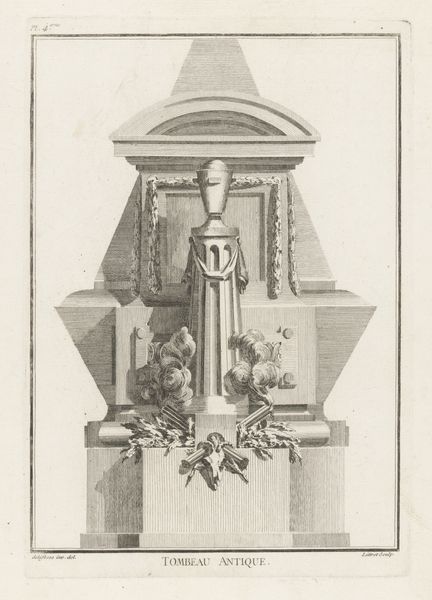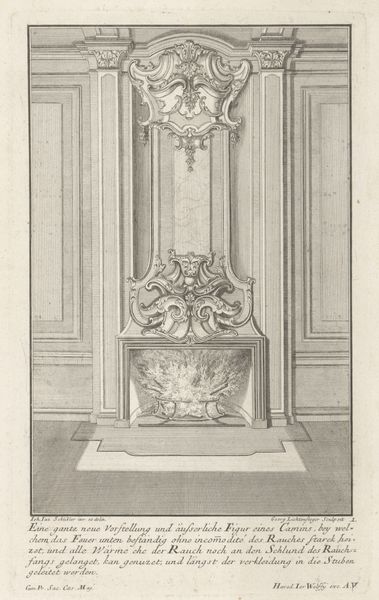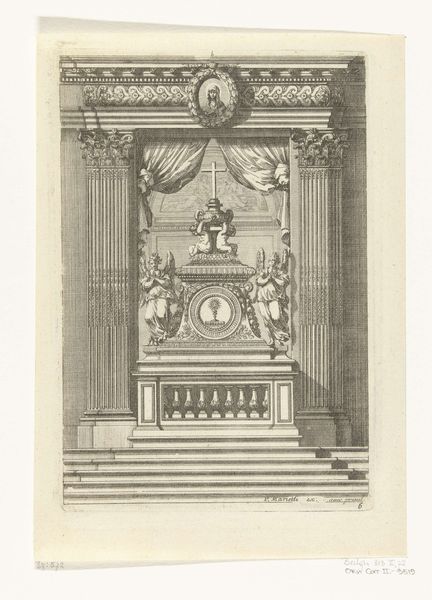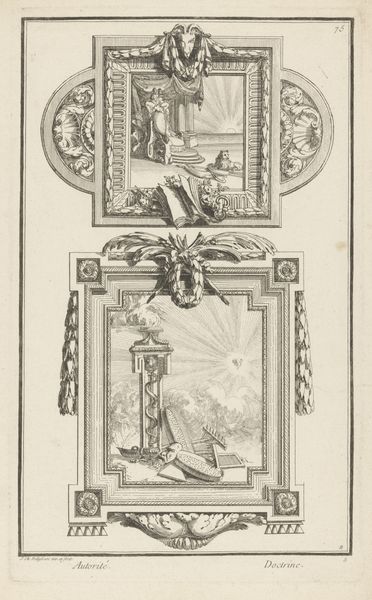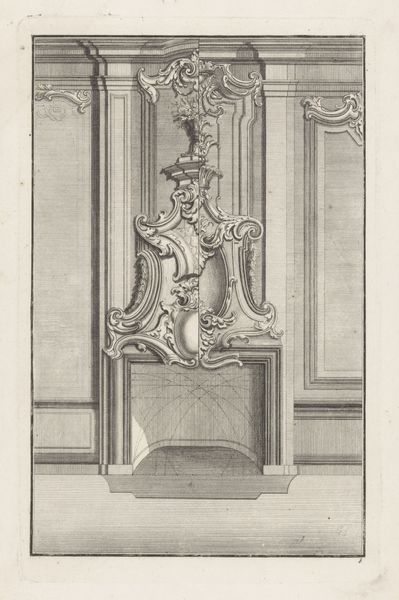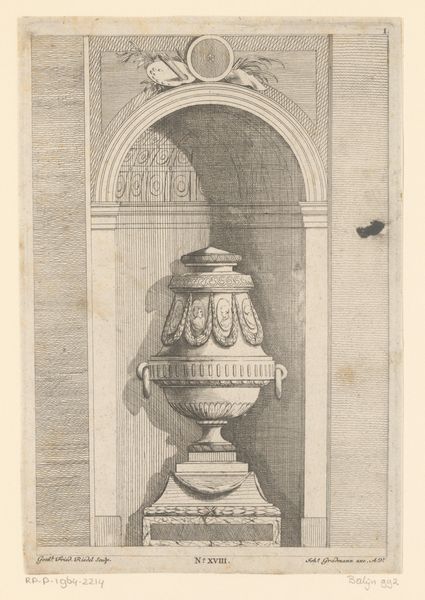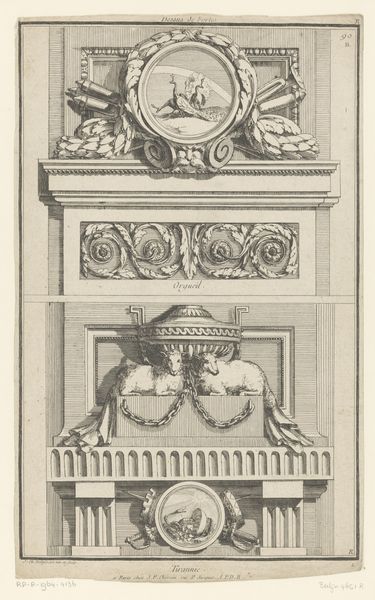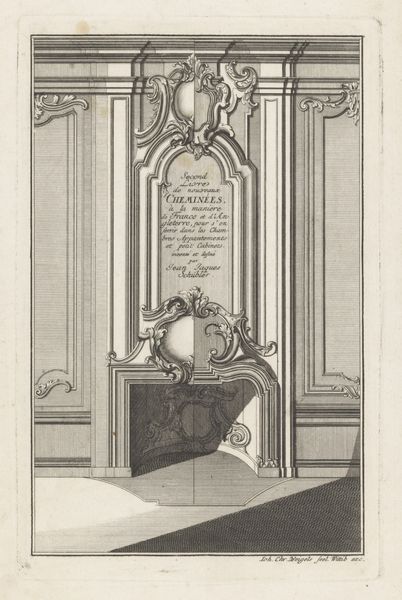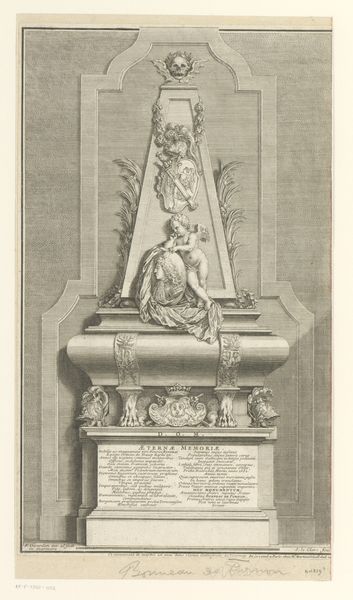
drawing, print, engraving
#
drawing
#
neoclacissism
# print
#
landscape
#
geometric
#
history-painting
#
engraving
Dimensions: height 184 mm, width 136 mm
Copyright: Rijks Museum: Open Domain
Curator: Here we have "Tombe met obelisk", an engraving by Juste Nathan Boucher, created between 1755 and 1782. It’s currently held here at the Rijksmuseum. Editor: My immediate impression is one of carefully orchestrated solemnity. The cool monochrome palette and the architectural setting give it a rather stark, almost didactic feel. Curator: Indeed. Notice how Boucher employs line to delineate form, creating depth through meticulous hatching and cross-hatching. The oval format encloses the composition, further emphasizing the central monument. It's an exercise in pure form, adhering strictly to neoclassical principles of order and restraint. Editor: But the obelisk itself – doesn’t it suggest something deeper? Obelisks have ancient Egyptian origins, representing the sun god Ra, power, and resurrection. The tomb form overlaid with these symbols creates an intriguing tension. Death isn’t simply an end here; there’s a clear assertion of enduring presence, a reaching towards immortality. Curator: You raise an excellent point. The inclusion of classical motifs such as the Greek key pattern and the sculpted figures flanking the obelisk work in concert. See how Boucher utilizes them to reinforce an aesthetic system predicated on balance and idealization. The architectural framework provides stability while directing the viewer's eye toward the verticality of the obelisk. Editor: And the drapes that adorn the walls suggest theatrics; consider this might allude to staged burial rituals and dramatic interpretations of death. Boucher layers symbols across centuries, mixing cultural meanings and offering the viewer an intricate puzzle. The tomb then becomes not just a marker, but a stage. Curator: Quite a complex and well-constructed interpretation. In that respect it's a fine engraving from the period. Editor: I agree. The emotional impact lingers. A potent reflection on time, memory, and the enduring human quest for meaning.
Comments
No comments
Be the first to comment and join the conversation on the ultimate creative platform.
